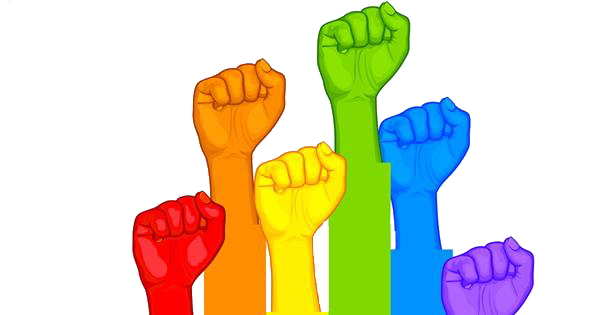Albert Mohler wrote an excellent article years ago that reveals the sinister method by which progressives began to normalize the public perception of the homosexual lifestyle regardless of what Christianity, and especially, Catholicism held to the contrary.
In his important article, “After the Ball —-Why the Homosexual Movement Has Won”, Mohler makes the following important points:
- Marshall Kirk, a researcher in neuropsychiatry, and Hunter Madsen, a Public Relations consultant, decided that in order to win acceptance of homosexuality within mainstream American culture they had to devise a strategy by which homosexuals would change their presentation to the the much larger heterosexual population. 2
- They conceived their book, “After the Ball” to be a “gay manifesto for the 1990s,” The authors called for homosexuals to repackage themselves as mainstream citizens demanding equal treatment, rather than as a promiscuous sexual minority seeking greater opportunity and influence.
- Writing just as the AIDS crisis hit its greatest momentum, the authors saw the disease as an opportunity to change the public mind. “As cynical as it may seem, AIDS gives us a chance, however brief, to establish ourselves as a victimized minority legitimately deserving of America’s special protection and care.”
- As men who knew the public mind extremely well Kirk and Madsen called for homosexuals to talk incessantly about homosexuality in public. “Open, frank talk makes gayness seem less furtive, alien, and sinful; more above board,” they asserted. “Constant talk builds the impression that public opinion is at least divided on the subject, and that a sizeable bloc–the most modern, up-to-date citizens–accept or even practice homosexuality.”
- Portraying homosexuals as victims was essential to their strategy. Offering several principles for tactical advance in their cause, the authors called upon homosexuals to “portray gays as victims of circumstance and depression, not as aggressive challengers.” This would be necessary, they argued, because “gays must be portrayed as victims in need of protection so that heterosexuals (especially the liberal/progressive-minded, including radical feminists) will be inclined by reflex to adopt the role of protector.”
- What about the origin of sexual orientation? The success of the homosexual movement can be largely traced to the very idea of “orientation” itself. More precisely, homosexuals advanced their cause by arguing that they were born that way. Madsen and Kirk offer this as candid public relations advice: “We argue that, for all practical purposes, gays should be considered to have been born gay–even though sexual orientation, for most humans, seems to be the product of a complex interaction between innate predispositions and environmental factors during childhood and early adolescence.”
- And how were they to overcome the biggest obstacle to the advance of their homosexual movement, namely, the conservative Christian and Roman Catholic Churches? Conservative Churches, defined by the authors as “homohating” are portrayed as “antiquated backwaters, badly out of step with the times and with the latest findings of psychology” (they painted the picture of Church people as a kind of spiritual basket of deplorables).
- Add to this the “softening” of parental discipline already in place in society at large thanks to the destructive influence of the “Self-Esteem movement” which began in the 60’s. Parents sought to become “friends” with their children and to make them feel “special” and “accepted” at all costs, even if the cost included compromising long held religious beliefs and family values. So if a child (at any age) announced one day that he/she was “gay”, the parental response tended to be one of anxious acceptance. The parent’s broken heart, disappointment and worry, as well as the perceived threat to their faith took a back seat to an attitude of “going along just to get along” so as not to “lose” their child.
- In addition to what Mohler reveals in his article there was concurrently a significant influx of homosexual candidates into Catholic seminaries. There, homosexual behavior was no longer taught to be a mortal sin. In fact, in many schools the words “mortal sin” were never used by priest/sister professors in the classroom. The result was that eventually nothing was said from pulpits or in classrooms about the sinfulness of homosexual acting out. And if one’s bishop was homosexual, a priest could expect some sort of discipline if he did speak publicly about the sinfulness of homosexual behavior.
- A troublesome change occurred in Church “Canon” Law. The 1917 Code of Canon Law had a clear set of penalties placed upon a sexually abusive priest as well as upon a homosexually active priest. These concrete penalties were removed in the 1983 Code which is more vague and does not mention explicitly “homosexual acts.”




No comments:
Post a Comment